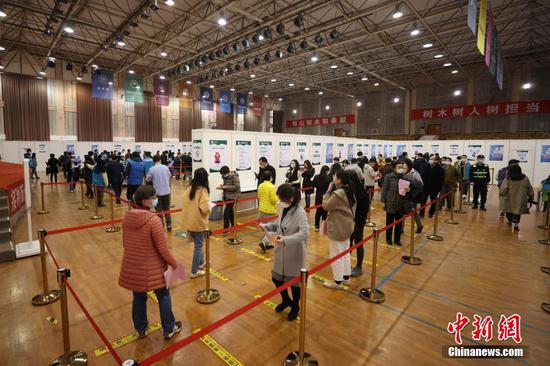
Visitors check Schneider Electric's equipment on display at the China Data Center Expo 2020 in Shanghai. (Photo/CHINA DAILY)
According to the country's 14th Five-Year Plan (2021-25), the energy consumption per unit of GDP and carbon dioxide emissions per unit of GDP will be reduced by 13.5 percent and 18 percent, respectively, during the period.
China also plans to expand forest coverage to 24.1 percent of China's total land area over the next five years.
By 2030, China aims to lower its CO2 emissions per unit of GDP by over 65 percent from the 2005 level and increase the share of non-fossil fuels in primary energy consumption to around 25 percent from an estimated 15.8 percent at the end of 2020.
Jing Chunmei, a researcher at the Beijing-based China Center for International Economic Exchanges, said the government is determined to expand the use of green energy and bring down carbon emissions to net zero.
To realize the twin goals, what will be required is the development of new technologies to capture and store emissions. That will also help strike a balance between emitting carbon and absorbing carbon.
International advisory company Brunswick Group released a study after the annual two sessions of the country's top legislature and political advisory body, saying that to increase reliance on low-carbon alternatives, China will also make a major push to develop new energy sources.
This will boost the use of wind and solar power, speed up the construction of hydropower plants in the southwestern part of the country, and promote the construction of nuclear power plants along the eastern coast.
The Brunswick study also said that China is likely to increase the proportion of non-fossil fuels in its energy mix to 20 percent by 2025.
Many global companies operating in China have taken the 2060 carbon neutrality goals as an opportunity to promote low-carbon technology transformation.
That is because when technology companies strive for carbon neutrality, they will help businesses first save on energy and reduce emissions themselves. But more importantly, this will provide the icing on the clean climate cake by encouraging companies from all sectors to strengthen innovation as well.
It should not come as a surprise therefore that Schneider has unveiled a new plan to speed up execution of a long-standing strategy to assist its customers and business partners in achieving their own sustainability objectives in China.
Like Schneider, Robert Bosch GmbH has set for itself clear sustainability targets in a plan entitled "New Dimensions-Sustainability 2025".
The plan focuses on six mega trends, including climate, energy, water and urbanization, to help protect the environment and improve people's lives.
Bosch's proposal for the carbon-neutral target reflects its confidence that China will continue to play an important role in climate action, said Chen Yudong, president for China operations at Bosch.
The company, he said, has invested 250 million yuan ($38.3 million) in environment protection to save water and energy, reduce waste and carbon emissions in China over the past few years.
Compared to 2011, Bosch's relative CO2 emissions from production activities in 2020 have been reduced by 52 percent year-on-year globally.
"We will contribute to China's green growth by sharing the technologies and experiences from more than 1,000 energy-efficiency projects and provide an advisory service to our Chinese partners in the future," Chen said.


















































